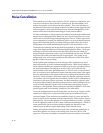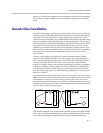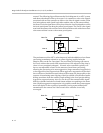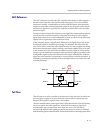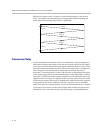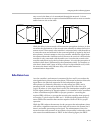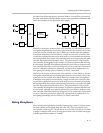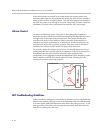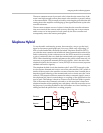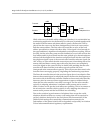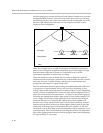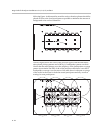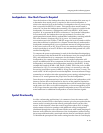
Design Guide for the Polycom SoundStructure C16, C12, C8, and SR12
B - 18
If the microphones are muted in the signal chain before the acoustic echo
canceller, then while the microphones are muted, the AEC will not be able to
adapt as there will be no signal present. Once the microphones are unmuted,
the AEC may have to reconverge to any new echo paths. This may result in a
momentary acoustic echo to the remote site until the AEC reconverges.
Volume Control
As shown in following figure, if the gain on the loudspeaker amplifier is
increased, the echo return loss will decrease meaning that there will be a more
stronger echo at the input of the microphones. This means that the echo
canceller will need to work harder to remove the echo. If the amplifier is
turned up too much (sometimes by as little as 6 or 10 dB), the acoustic echo
canceller will not be able to operate properly. This may result in persistent
residual echo under low echo return loss (high echo) situations.
To properly adjust the volume of local room, one should adjust the sources
feeding into the echo canceller (the far in signals) or if that is not practical, at
least ensure that the echo canceller reference is also adjusted as the
loudspeaker level is adjusted to match the adjustments of the amplifier. Under
these conditions the ERL will remain relatively fixed, allowing the echo
canceller to continue operating properly.
AEC Troubleshooting Guidelines
In the event that a configured conferencing system has acoustic echoes that are
heard by the remote participants, the most important step in troubleshooting
is to mute signal paths and determine when and if the echo goes away. If the
echo goes away when the local microphones are muted, then the local echo
canceller is causing the echo issue.
AEC
Local Room
Local Room
Amp
B
A
C



